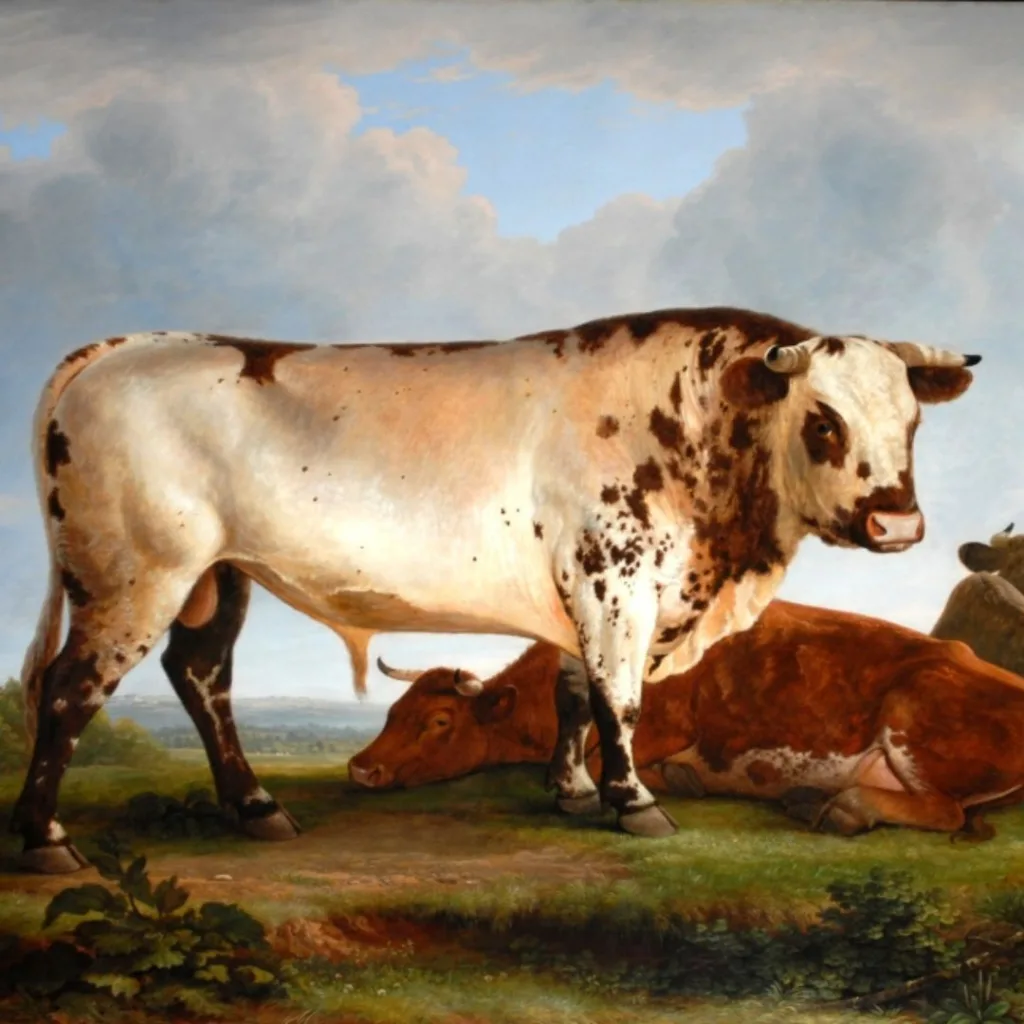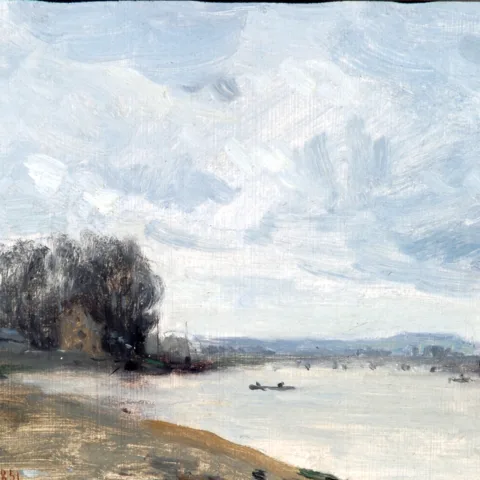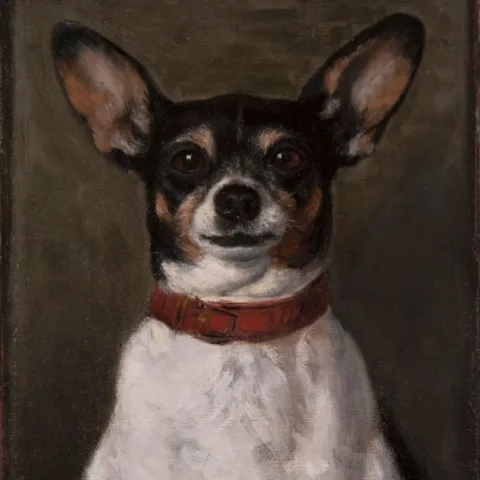The Bowes Museum Blog

Holy cow

The Lunar New Year, also known as Chinese New Year or Spring Festival, begins today.
This year it is symbolised by the Ox, which is one of the 12 animals that won The Great Race set by the Jade Emperor, in Ancient China.
The story goes that a long, long time ago the Emperor wanted 12 animals as guardians and so he set up a race inviting all the animals in the realm to join. The reward was on a first come, first served basis so the order they crossed the Heavenly gate in, would determine their ranking. The Ox was first in the race and it would’ve won if it wasn’t for the rat. The rat travelled on the ox’s back to cross a river saying its good eye sight would guide them both and that he could sing a song to speed the ox on. The trusting ox liked the idea and kept on speeding to get to the gate faster. But upon arrival the rat jumped off the ox straight at the feet of the Emperor, thus becoming the first lucky sign of the zodiac. The ox was given the second ranking in the zodiac.
This story also determined some of the characteristics of the symbol represented by the ox: strong, reliable, fair and hardworking, disciplined and trustworthy. But it can also be stubborn and gullible.
So, the ox is beloved in the Chinese culture. But how is it seen in others? And what symbolism does it have in art?
Many believe the cow is a holy creature. In Hinduism and Buddhism the cow is a sacred animal and those who try to hunt, kill and eat it should be seen and treated as demons. In Ancient Egypt bulls embodied strength and were seen as the earthy representation of virile deities like Min. In the Greek mythology, Helios (the sun god) had herds of oxen as his prized possession. In some forms of Christianity, the cow is considered the animal of sacrifice and has been depicted alongside St Luke the Evangelist for centuries.
Unlike the humble pig or the cheating rat, the champion ox has got a tremendous amount of ‘canvas’ time, especially in European art. But why and where did it start?
Divine representation
In Greek, Roman and even Christian beliefs the humble cow is often represented in great company. Take these fine plates from the Ceramic collection in The Bowes Museum.
Dating way back to 1575 they depict cows or oxen in religious or mythological representations like the 1575 Urbino Maiolica plate depicting Genesis 8 or the 1645 Castelli Maiolica one depicting the Roman myth of Europa and the Bull.
Life is good when you have milk
The 18th century saw a rise in the popularity of still life paintings, which was a result of people wanting to make their homes more beautiful by bringing nature inside. At the same time though there was a rise in the number of livestock paintings especially with the Dutch landscape painters. Why was that? Well, Dutch farmers were extremely proud of the milk their cows produced, which was world famous. Not only did this represent a national pride but also showcased the economic stability in Holland with many cattle owners requesting paintings of themselves and their livelihood as a display of their well-being and wealth in the community.
This ceramic, moulded with a cabbage leaf design, is known as a ‘Dutch Jug’. It is decorated with transfers that have been coloured and gilded, with prints of: The Rural Lovers from an engraving by Francis Vivares after a painting by Thomas Gainsborough, The Milking Scene from an engraving by Luke Sullivan and The Milkman after an engraving by Robert Sayer.
Flemish artist Alexander van Bredael specialised in the depiction of everyday scenes set in his native Antwerp. This painting illustrates the bustling local cattle market or Ossenmarkt, which is crowded with lively figures. The painting has at its centre the transaction for a cow between a man in a long coat and a smiling butcher, all observed by neighbours and passers-by.

Ceramics like these two 1765 Delft Maiolica figurines were produced in high numbers in the 18th century. The figurines became more and more decorative, perfect for a beautiful home.
Cows, cows, but make it competitive
We understand that the mighty cow was represented in many religious or mythological depictions throughout the Renaissance and Baroque periods and was a huge influence in the circles of Dutch landscape artists, but where did the craze of depicting cows start in British art?
The 18th and 19th centuries celebrated livestock through painting in England too. With a small difference. It wasn’t just a celebration of the animals’ achievements but more like that of the owners or as they were called the improvers’ achievements in finding new ways of breeding, feeding and creating magnificent beasts. Local, regional and national competitions emerged, where farmers would parade their large cows, tremendous pigs and very plump sheep to be admired and prized. Even Prince Albert had his own prized pigs and cattle.
Proud gentry owners were depicted next to the animal or if you were such a very famous cow like the Durham Ox, depicted below, you would get the whole canvas for yourself.

One of the largest paintings in The Bowes Museum galleries, measuring 255.5 cm in height and 365.5cm in width, is the 1805 painting of a Bull or the Durham Ox by the Leicestershire born artist John Glover. In 1831 he settled in Tasmania and became one of the most important influences on Australian art.

Like in Holland, this was also a period of economic stability in England. But the art of raising animals became a competitive thing with huge efforts being put into making your animal the best beast in the land. The improvers found new ways and new diets for their stock, from selective breeding to feeding them oil cakes and turnips. Anything to create a heavier, faster growing animal.
This changed the animal’s measurements to the point that the weight of an average British cow tripled in less than a century. Paintings, prints and drawings now stated the weight of the animal shown as a thing of pride and honour. Some of these were commercialised and used in small farmers communities as the new standard ‘beauty’ ideals.

You might say some of these animals look crazy with humans way smaller than a cow or even odd, like the artist only heard what a cow might’ve looked like but had never actually seen one in real life, and that is because some of the artworks created in this period were exaggerated to showcase the ideal shape of the animal. For example, cows were represented as rectangular, sheep as oblong and pigs as a football shape and the request for artists to add fat in certain desirable areas was a very common thing.
Today you can still see traces of this period either in pub names like The Durham Ox or The Craven Heifer or finding prints with slightly out of shape animals.
We can’t predict what the ox is going to bring this year but we are definitely going to keep positive and trust all the ancient beliefs that made this strong but humble animal a leader in the first place.
Nónglì xīnnián kuàilè or Happy Lunar New Year!














